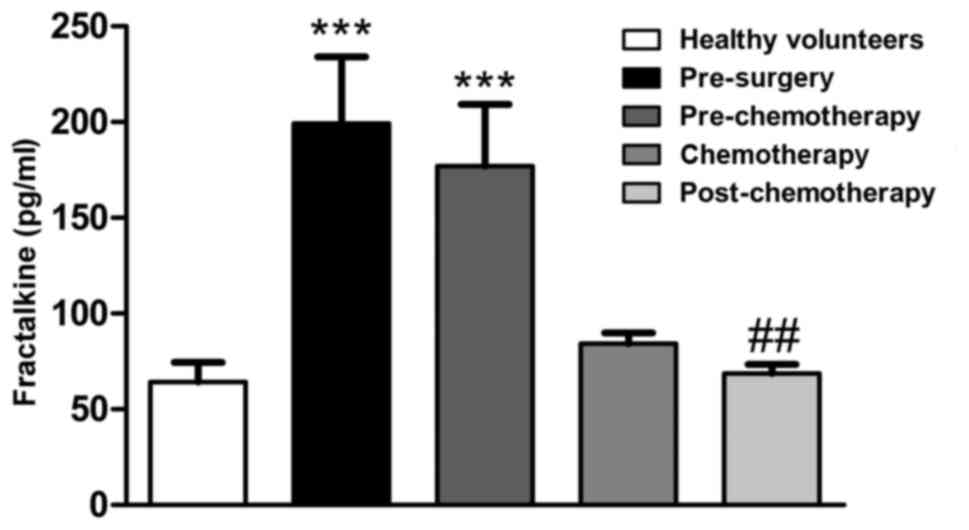Fractalkine (C‑X3‑C motif chemokine ligand 1) as a potential biomarker for depression and anxiety in colorectal cancer patients
- Authors:
- Published online on: July 4, 2017 https://doi.org/10.3892/br.2017.937
- Pages: 188-192
Metrics: Total
Views: 0 (Spandidos Publications: | PMC Statistics: )
Total PDF Downloads: 0 (Spandidos Publications: | PMC Statistics: )
Abstract
Fractalkine, a unique chemokine of the CX3C subfamily, is involved in the pathogenesis of different types of cancer and also in non‑immune mechanisms associated with psychiatric disorders. The aim of the present study was to investigate whether there is a correlation between anxiety, depression and fractalkine serum levels in colorectal cancer (CRC) patients in different stages of antitumor therapy. Four groups of patients undergoing treatment (n=20 per group) were evaluated: Patients with CRC who did not undergo surgical resection of the tumor; patients who underwent resection and who did not start adjuvant therapy; patients undergoing chemotherapy for ~3 months; and patients who had completed adjuvant chemotherapy regimen for ~6 months. The control group was composed of 20 healthy volunteers free of any psychiatric or immune system disease. Depression and anxiety were evaluated using the Hospital Anxiety and Depression Scale (HADS) and serum levels of fractalkine were measured by cytometric bead array. Clinically relevant levels of anxiety and/or depression were observed in all of the CRC patients at the different stages of antitumor therapy. Elevated serum levels of fractalkine were identified in the CRC patients in the pre‑surgery (P<0.001) and pre‑chemotherapy (P<0.001) groups, but reduced upon chemotherapy (P<0.05). Furthermore, a positive correlation was observed between fractalkine levels and the HADS scores in the CRC patients at different stages of antitumor therapy. These results demonstrate a link between fractalkine, depression and anxiety in CRC patients indicating that this chemokine is involved in the pathophysiology of these comorbidities. An improved understanding of the molecular mechanisms involved in these psychological disorders will allow the design of novel therapeutic strategies to assist in alleviating such symptoms in cancer patients. Therefore, fractalkine may present as a relevant biomarker for depression and anxiety in CRC patients.










